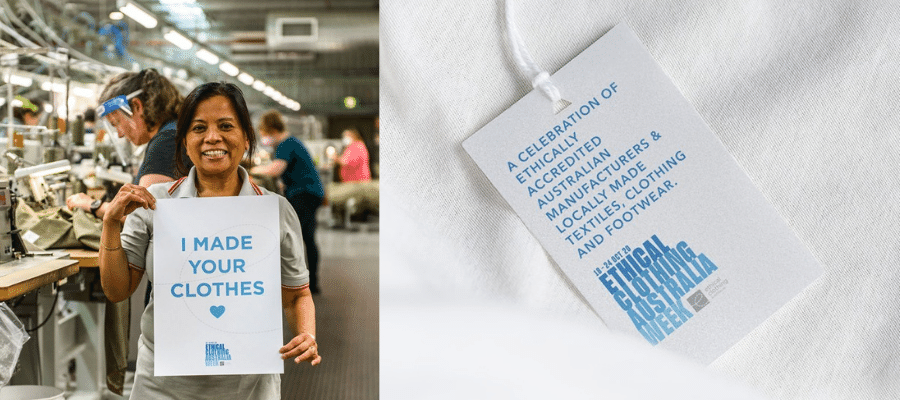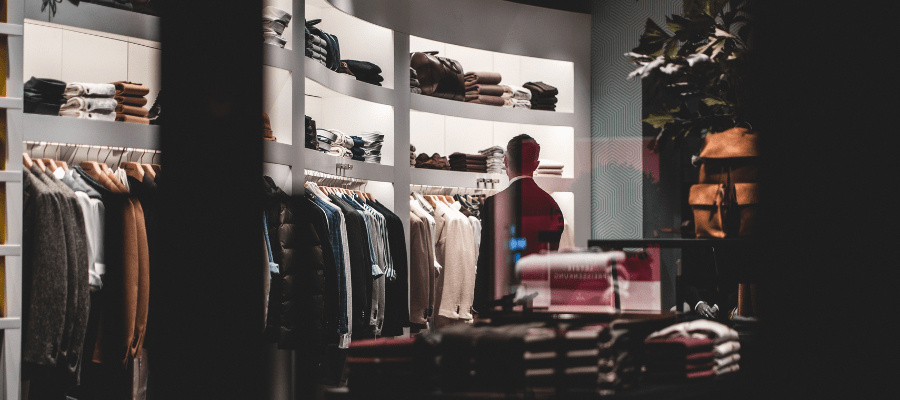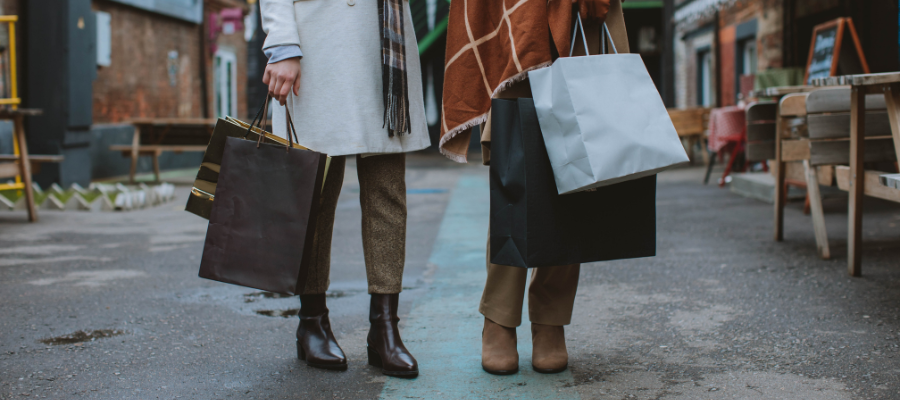The popularity of online shopping has only continued to rise. Where else can your browse in your PJ’s with a glass of wine in hand or browse an entire street worth of stores in less than an hour (without the tired feet)? The feeling of opening up a newly arrived parcel or box filled with new goodies for your wardrobe… it makes me excited just thinking about it!
But with more and more online stores who claim to be green or an “eco-friendly” range launched every day. How can we know if our online shopping habits are helping or harming our Earth? What ways can we encourage our favourite brands to step over to the green side?
I’ve listed 5 of my top tips to help you become a more conscious online shopper.
1.Check the brand’s impact
Come across the perfect summer dress in your lunchtime scroll? Before you click buy now, take a second to do a little research on the brand to avoid supporting fast fashion. Look for certifications such as Fairtrade or GOTS approved fabric. These certifications ensure that garment workers are paid a living wage and that brands are leaving as less of environmental impact as possible from their actions
You can also search for your favourite brand on the ‘Good On You’ app. Developed to help conscious shoppers find brands who aligned with their values. By using a rating system of ‘We Avoid’ to ‘Great’, the Good On You app can rate brands based on their impact on one of the three categories – People, Planet and Animals.
‘Good On You’ also suggest similar brands that score higher so you can discover some new styles to match your values. But my favourite feature by far is the ability to message brands and give them some positive feedback or urge them to do better. Our collective voices can help change a brand for the better
Need a starting point? Check out some of my favourite sustainable brands
2. Research, Research, Research
No matter how many certifications a brand has, it still pays to do your own research to ensure not only are they are transparent, but also to make sure their garments will be the right fit! There is no point having a wardrobe full of sustainable brands if they don’t fit.
Since we can’t try on or touch, and to make sure you are ordering the right fit, read up on the description and make note of fabrics, the model’s measurements and sizing. Reading reviews left by other buyers can tell you if the items are true to size or to size down. I have also had a lot of luck with emailing the brand if I have further questions, they have always been helpful – think of it as making friends with your local sales assistant!
Understanding fabrics can also be the key to a great fit. If your jeans lack stretch, you may need to size up to get that perfect fit. Brush up on your fabric knowledge with this handy guide.
As much as we love free returns, often those returns end up in landfill. Most companies don’t have the technology in place to process the large influx of returns (a ripped tee needs to be treated differently to those jeans that don’t fit) it’s often easier and cheaper to bundle them all up and sell them cheaply to discounters or just to dump them.
It’s estimated that approximately 5 billion pounds of waste is generated by returns each year. This contributes to 15 million metric tons of carbon dioxide in the atmosphere. While this most likely won’t happen with a smaller retail brand, its still important to double-check those measurements.
To lessen your environmental impact further, you could also take the time to shoot a friendly email or insta message asking them how they package their garments. We all know that single-use plastic is far from planet-friendly, so let’s try and encourage brands to use packaging such as The Better Packaging Co. Their mailers are made from biodegradable and compostable materials such as PLA, PBAT and PLA – all derived from natural materials such as corn starch, husks and straw. After all, isn’t unboxing your new eco-friendly dress all part of the experience?
Compostable packaging isn’t the only planet positive step for brands. Using a carbon-neutral shipping service helps to offset harmful CO2 emissions from the transportation required to get our orders to us. Australia Post became carbon neutral as of September 2019 and Sendle and Shippit both specialize in 100% carbon neutral shipping. While it’s not a perfect step, it’s one in the right direction.
3. Double check
To avoid lengthy shipping delays, high custom charges and not-so-planet-friendly air miles, see if you can source what you need from a local store instead. Buying locally not only supports our favourite designers and businesses, but it can also help bring the once strong manufacturing sector back to Australia.
Visit Ethical Clothing Australia for a list of Australian labels that manufacture their ranges fairly around Australia.
4. Treasure hunt
In the words of Ariana Grande – “I see it, I like it, I want it, I remember that natural resources are precious and that there’s already plenty in the waste stream so I buy it used instead”. Okay maybe she didn’t say that, but buying preloved instead of new utilizes the vast amounts of clothing out there already.
According to ThredUp, online thrifting is set to grow by 69% between now and 2021 and resale of preloved clothing is expected to be bigger than fast fashion by 2029. With figures like these and millions of preloved stores popping up, both online and in-store, there is almost no excuse for those in the know to buy preloved.
Depop, Vestiaire Collective, eBay, The RealReal… Need I go on? Some of my most loved pieces have been purchased second hand. And while I work in a consignment style store (hello Mutual Muse!) to get my preloved fix, I regularly pursue eBay and Facebook Market place for the latest trends.
5. Ask the final question
‘Do I need this?’ As tempting as it is to fill up our wardrobes with every preloved gem we find or that one of a kind handcrafted piece. Buying unconsciously can be a slippery slope. Our wardrobes balloon with unworn garments, we get overwhelmed and declutter, sending those pieces back to op shops or worse, landfill.
So take a step back, sleep on it before entering your details. Identify why you are buying – Bored? Hungry? Procrastinating? Try another activity to curb the impulse to buy or create a wishlist of your favourite fashion trends. Often I find I no longer want that must-have dress after a few weeks, lucky it didn’t end up in my wardrobe!
Still, need to scratch that shopping itch? Follow these sustainable style legends and shop your wardrobe! You may be surprised at what trends are back in vogue and how much money you will save.
While the most sustainable option would be to go cold turkey on fashion, often that’s not a feasible option for many (myself included). Fashion is a way to create and explore our identities. Don’t feel guilty if you clicked add to cart one too many times, just do a little research for your next online browse or dive into the depths of your wardrobe to recreate your style icons latest look.
Have you thought about a career as a Fashion Stylist? Download your free Course Guide here to learn about Australian Style Institute’s leading styling courses. Train online or in-person and turn your love of fashion and style into your dream career.
By Jenna Flood



























